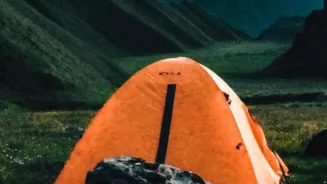Navigating Language Barriers While Traveling: 10 Tips to Enhance Your Journey! Dive in for expert advice!
Traveling to a new desh (country) is always exciting, isn't it? Imagine exploring historical places,
tasting new foods (vegetarian, of course!), and meeting people from different cultures. But, sometimes, there's a bit of a "kich-kich" (problem) – the language barrier. Don't worry, boss!
Language shouldn't stop you from having a "mast" (great) trip. Here are 10 tips to make communication easier and your travel experience smoother, even if you don't speak the local language. Get ready to travel like a pro!
Learn basic phrases in local language before travel for better connections and experiences
Before you even pack your bags, try to learn a few basic phrases in the local language. "Hello," "Thank you," "Please," "Excuse me," and "How much does this cost?" are super helpful. Even if your pronunciation isn't perfect, people will appreciate the effort.
It shows you're trying to connect with their culture. There are many apps and websites that can help you learn these phrases quickly. Think of it as adding a secret weapon to your travel arsenal. You can even write these phrases down in a small notebook to carry with you.
This way, you'll always have them handy when you need them. Don’t underestimate the power of a simple “Namaste” or “Shukriya” – it can go a long way in bridging the gap and making people more receptive to helping you out.
Learning these basic phrases also shows respect for the local culture, fostering positive interactions and creating a more authentic travel experience. So, before you jet off, spend some time learning a few key phrases – you'll be surprised how much it helps!
It is good practice and it will help you.
Body language is key in communication; gestures transcend words
Body language is universal. A smile, a point, a shrug – these gestures can convey a lot. Don't be afraid to use your hands to explain what you need. Just be mindful of cultural differences in gestures. For example, a thumbs-up might be positive in many countries, but offensive in others.
Watch how locals communicate and try to mirror their gestures. When asking for directions, point at a map or use your finger to trace the route you want to take. If you're trying to order food, point at the menu or use your hands to indicate the number of items you want.
Remember to maintain eye contact and smile to show that you're friendly and respectful. Practice these gestures before your trip so you feel more confident using them in real-life situations. This is a simple and effective trick. Communication is more than conveying language.
It is an attempt to explain the motive.
Translation apps are essential for travelers
Thank God for technology! Translation apps like Google Translate, iTranslate, and Microsoft Translator are your best friends when traveling. You can type in what you want to say and the app will translate it into the local language.
Some apps even have a voice translation feature, which is super useful for conversations. Download the app and the necessary language packs before you leave for your trip. This will save you data charges and ensure that you can use the app even when you don't have internet access.
Learn how to use the app effectively, including how to type, speak, and translate images. Practice using the app in different scenarios so you're comfortable with it when you need it most. These can be useful.
Always carry a phrasebook for travel emergencies
Even with technology, it's always good to have a backup. A small phrasebook or dictionary can be a lifesaver if your phone battery dies or you don't have internet access. Look for a phrasebook that includes common phrases and vocabulary related to travel, food, accommodation, and transportation.
Highlight the phrases that you think you'll use the most. Carry the phrasebook in your bag or pocket so it's easily accessible. If you're not sure how to pronounce a word, try writing it down and showing it to a local. They may be able to understand it even if you can't pronounce it correctly.
This works. The local might pronounce it for you.
Effective visual communication through writing and drawing
Sometimes, the simplest solutions are the best. If you're having trouble communicating verbally, try writing down what you want to say. You can use a notebook or even a piece of paper. Draw pictures if necessary. Visual communication can be very effective.
For example, if you're trying to find a specific location, write down the name of the place and show it to a local. If you're trying to order food, write down the names of the ingredients you want or don't want.
Even if the person you're communicating with doesn't speak your language, they may be able to understand your writing or drawings. Also, carry a pen and paper always.
Patience and respect in overcoming language barriers while traveling
Patience is key when dealing with language barriers. Don't get frustrated if you can't understand someone or if they can't understand you. Take a deep breath and try to find another way to communicate. Speak slowly and clearly, and avoid using slang or jargon.
Be respectful of the local culture and customs. Even if you don't understand everything, show that you're trying to learn and connect. A smile and a polite attitude can go a long way in easing communication. Remember that communication is a two-way street.
Be open to listening and learning from the people you're interacting with. If someone is trying to help you, be grateful and appreciative. "Shanti Shanti" is the key to a smoother travel experience. By being respectful and showing you're humble, you will win people over.
AI Generated Content. Glance/InMobi shall have no liability for the content









